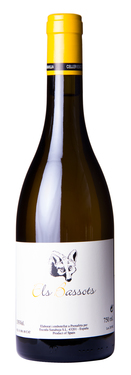For a year the name of this cosy new bar was identical with the title of this post. The new name is En Trapp Opp, that translates to something like One Step Up (trapp means stairs). It’s headed by Jonas Jonsson, and has quite close ties to Norwegian importer Falchenberg & Nærlie, where Jonas is himself a partner. This means that the bar offers a wine selection from this particular importer, but by no means exclusively from them. Today they have some 50-60 different wines on offer, and they use Coravin (you know the needle that takes the wine out through the cork and replaces the empty space with gas, to keep the quality intact). They have also other activities, like visits from wine producers and importers, and you shall not be too surprised if there is some ecclectic downstripped live music in the room either.
A hidden pearl in the centre of Oslo
Their aim is to present wines as natural as possible, in other words from organically grown grapes, made with natural fermentation, without excess oak treatment, or without too much treatment of any sort. However, there is little fundamentalism here. If the producers want to protect their wines with a little sulphur they can still have a place in this bar.
The food is made by Thomas Moen, who has a long experience from the gastronomic scene in town, and who also work for the import company towards horeca. I visited twice during last weekend. The first time I had a cockerel confit with a lot of delicious vegetables that was meant to be part of their new takeaway offer.
Jonas
Jonas in front, Thomas in the shadows
Here are some of the wines I tasted: It was only natural to begin with Falchenberg & Nærlie Riesling 2015 (Blasius), the importer’s own brand. This Rheinhessen riesling has become a relative bestseller, and deservedly so. The new vintage was even more generous than the previous, with a more focused fruit, and a smooth yet stimulating, and fruity taste. Trebbiano 2014 (Casale), from the Chianti area of Toscana, is a “prolonged skin contact” wine, light brown-orange in colour, and quite interesting for this relatively neutral grape.
We discussed the Coravin concept. The reason for this was that Jonas had been in doubt whether the bottle variation of some wines was due to just that – bottle variation – or if the device could have its limitations. The Red Car Pinot Noir 2012 from California’s Sonoma Coast was for some reason lacking in fruit richness. But the second bottle was better, and when I returned the day after it was in a very good shape, with all its cool, fresh pinot character intact. We also tasted two bottles of Langhe Nebbiolo 2014 (Elio Sandri), where the first bottle was little more than tannin structure. The second was delicious, with a much richer fruit, some of the usual underwood aromas, and where the structure only added to the complexity and typicity of the style.
On the second day (or more accurately: late night) I got the chance to taste the 2014 vintage of Karl May‘s Spätburgunder, a very luscious and refreshing German wine with a slightly “pétillant” feeling on the tongue.

Completely wrong, according to some people’s etiquette, I had a champagne after this, the pure and lovely Pierre Gerbais Cuvée de Resérve, made from 50% pinot nois, and the rest pinot blanc and chardonnay. This one is quite dry at 6 grams of sugar, and has rested three years on its lees. Very good ageing character, with freshly baked bread, and in the mouth it’s quite rounded, though the continental terroir shows through in the steely acidity that is inside. Interestingly enough I rounded off the whole séance with a cider from the western Norwegian fiords, Aalholm Cider Medium, a round and mild drink that was delicious with the shrimp cocktail, a leftover from a Swedish party earlier that night.
En Trapp Opp will hopefully be known to a lot more people in the future. In the long run it will maybe benefit from the waiting time, as it’s now probably more fit to meet a wider market.
Leave a Comment











 The whites bear Vasja’s fingerprints
The whites bear Vasja’s fingerprints













